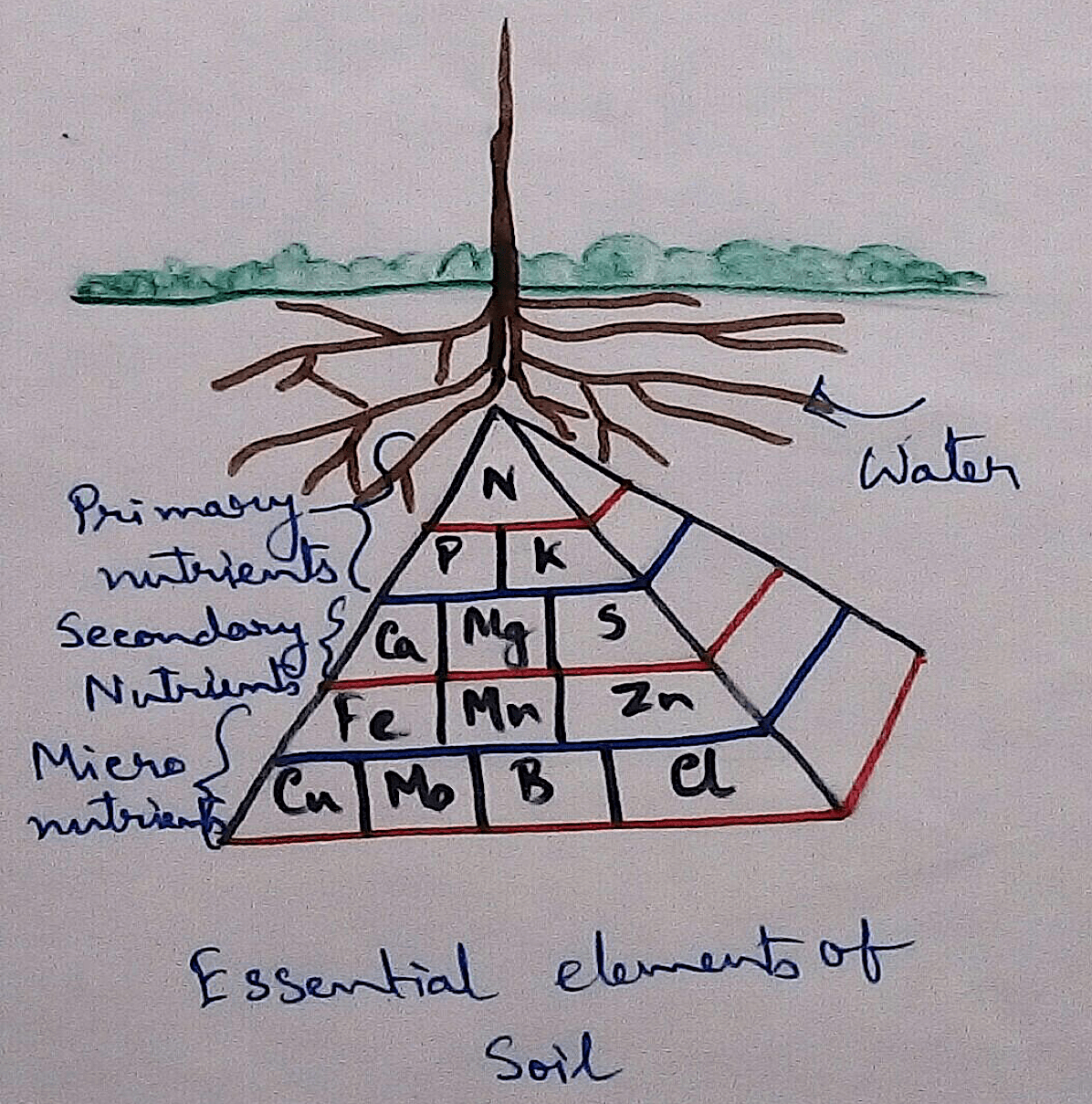Soil as Reservoir of Essential Elements
It is accepted that soil is very much essential for the plants to grow. Soil is made up of three layers. Among the three layers topsoil is the most enriched layer of the soil. In this layer plants grow. This layer contains all the critical elements which are essential for plants and deficiency of those expressed different symptoms in the various parts of the plants.
Factors that present in the soil that causes soil to become essential are-
1. As a result of weathering maximum elements are found in the soil as different components those are breakdown by air water and other natural things and convert it into soil. In this element plants can get their macro elements and micro elements means all the Essential elements as a form of salt or ions within the soil. When roots absorb water from the soil it also observed that solves and the minerals that are found in the soil as a dissolved form. Components those are dissolved in the water and observed by the roots are called sap. SAP is observed by the root and carried up to the leaves by the process called ascent of SAP.
2. Plants cannot take solid things like salt and ions from the environment by the help of stomata ,it can only observed gaseous substances by the pores of stomata. It is known that plant requires some essential elements for their nutrition and for making photosynthesis and this thing only up taken by the part of the plant called root. Salt and ions can only be absorbed by the membrane of the fruit by the process called Osmosis or active transport. Thus the root is the only part of the plant which can absorb minerals and water from the soil. We should apply fertilizers to the soil so that roots can uptake its nutrition from the soil.
3. Plants and animals cannot take nitrogen directly from the air. Thus they need it from the environment indirectly. Plants uptake nitrogen as a form of nitrate nitrite salt and ions by the root. Animals cannot take nitrogen directly from the environment for this they are dependent on the plants and other plant products. Nitrogen is must for all plant and animals as it constitutes the structure of protein DNA RNA enzymes etc. Some symbiotic bacteria are present in the soil mainly in the leguminous plant roots which can trap nitrogen from the air by the form of nitrate, nitrite, ammonia salt and help the plant to absorbed by the roots. On return to this plant give shelter to those bacteria.
4. Soil also contains humus which is made up of dead plants and animals or the organic matter of the living beings. These things added high level of nutrition to the soil. Which provides the plant their desired nutrients and full fill the quantity of essential elements.
5. Water which is absorbed by the roots are also remain stored in the layer of the soil. This water diffused towards the root.
Recent Articles
-
What Is Plasma? | Blood Plasma | Proteins | Nutrients | Cholesterol
Nov 07, 25 10:29 AM
Blood is a mobile fluid which is a connective tissue and is derived from the mesoderm like cell any other connective tissue. Colour of blood is reddish and that flows inside the blood vessels by means… -
Disorders of Respiratory System | Tuberculosis | Pleurisy | Emphysema
Oct 28, 25 11:39 PM
Tuberculosis is very common disease and is caused by a type of bacteria called Mycobacterium tuberculosis. This disease causes different trouble in the respiration and infection of several parts of th… -
Regulation of Respiration | Respiratory Centres | Inspiratory Area |
Oct 14, 25 12:13 AM
Respiratory Centre is the area that controls the rate of respiration and it is observed to be located in medulla oblongata and pons. Respiratory Centre has the following will dispersed components like… -
Explain Transport of Gases | External Respiration | Tissue Respiration
Oct 09, 25 11:35 PM
In humans gaseous exchange is completed in the following ways the steps are - External Respiration or Breathing - Breathing in false taking in of Oxygen and giving out of carbon dioxide in the body. M… -
Kind and Number of Teeth | Location of Teeth in Mouth | Care of Teeth
Sep 11, 25 12:52 AM
Kind and Number of Teeth













New! Comments
Have your say about what you just read! Leave me a comment in the box below.